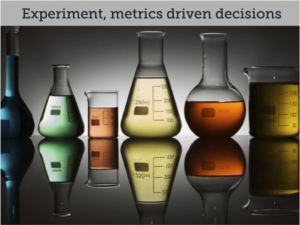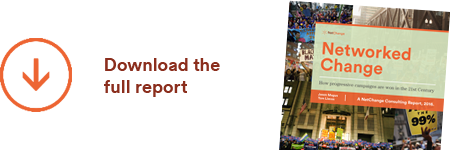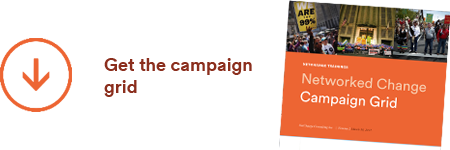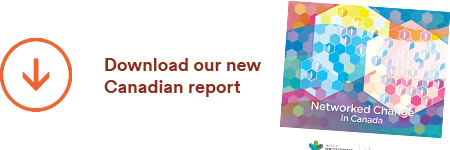People often ask me what are today’s most successful online campaigns. It’s a great question to ask when planning your own, because the pace of change keeps speeding up, and campaigns that aim for viral growth and real engagement know that just adding a website and Facebook page to the same old campaign plans isn’t working anymore.
I recently had the chance to do a deep dive with some of the architects behind some of the most successful storytelling and engagement campaigns of recent memory. I looked at The Story of Stuff, Human Rights Campaign’s Equality campaign, 350.org’s Do The Math Tour, the It Gets Better Project, the controversial but still massive Kony 2012, and some corporate campaigns that engaged giant volumes of people.
Here are six things I found most of these epic campaigns got right:
1. Listen first.
Everyone knows the fundamental principle of engagement is being two way or “interactive,” but how many of us are set up functionally to do any actual listening of those outside our own staff? The most effective campaigns weren’t just based on hunches cooked up in a boardroom, they came from a seed of community based research.
I guess nothing’s much changed here as political campaigns and the big advertisers have been using research to persuade us for generations. What’s different now is how quickly (and cheaply) you can get great insights from your own supporters, which basically nulls the old “we don’t have time / $$$” arguments we all use to avoid this step.
With supporter listening you get great insights plus a bonus bought-in base willing and able to help push your campaign out once it’s live!
2. Focus.
 Everyone today is overwhelmed: your audiences and your staff. So let’s just be honest that we can’t communicate six key messages or deliver on a dozen actions. As hard as it is, the core of a great campaign is to focus on one big idea, one achievable goal, and build everything out around that.
Everyone today is overwhelmed: your audiences and your staff. So let’s just be honest that we can’t communicate six key messages or deliver on a dozen actions. As hard as it is, the core of a great campaign is to focus on one big idea, one achievable goal, and build everything out around that.
Focus = clarity = memorability = engagement.
Once you have your focus, build just a few actions people can take. If you give busy people a giant menu of what to do, they often don’t do anything. That’s a proven fact in behaviour change marketing.
Bonus tip: Resource things well. Once you’ve narrowed your campaign focus and actions, really, really support them. If the action is grassroots, do real organizing. If it’s online engagement, listen and build real community. If it’s about sharing content, make great content. Don’t just sort of do things: competition is stiff and people notice shit that’s half done. All that excess drags you down.
3. Craft a great story.
A compelling story was at the heart of all of the campaigns I studied. Audiences these days are savvy: you can’t just spin them a heartstrings message and expect them to jump in. Today’s successful campaigns take the mystery out of change by sharing a step by step recipe for making it. This can be hard for campaigners who are used to keeping their strategy hidden, but anyone other than your hardest of hardcore base now expects to be levelled with now, and needs to buy in.
And a note about storytelling. Watch this 4-min video from Jonah Sachs, Principal of Free Range, and throw out almost everything you think you know about it. NGO’s consistently position themselves as the “Hero” of the story, the noble change-maker, but today’s best people powered campaigns know their role is as the mentor (think Obi-Wan), and the hero is the supporter (yes, they get to be Luke). Stop laying down facts about how awesome you are and how much you know, and start telling stories about how your audience (guided by you) is making real change. It brings them in.
4. Integrate online and offline and repeat.
Everything you do online you do offline. Unless you’re Upworthy, your internet-only campaign isn’t going to fly. The most consistently successful online campaigns are ones that have a serious grounding in a real world base of activity. To do that you need to get your whole org working together and line up your own channels (all of them: organizing, events, volunteers, web, email, social media across all departments, etc) behind one campaign goal.
Once you’ve got something good going on and are rolling it out across all your channels, do what creatives and intellectuals loathe: repeat the same thing over and over again. In social, in PR, in your blogs, at the door, in person. “It’s only when you’ve said something so many times that you’re utterly and completely sick of it, that someone has even heard it. We don’t realize the bubble we (as campaigners) live in.” — David Fenton, Fenton Communications (in Grist)
5. Try new things but make data driven decisions.
 When I ask colleagues what the #1 trait of today’s most effective campaigning orgs is, data-driven decision making is often the answer. Employing principles of user-experience design in site or tool planning, testing key messages and actions on a sub-group before launching more widely, using metrics to educate colleagues on what people care about and connect with, or asking “why are we doing this, what is our theory of change” before jumping from strategy to expensive execution are all ways of bringing some science into the murky world of communications decision making.
When I ask colleagues what the #1 trait of today’s most effective campaigning orgs is, data-driven decision making is often the answer. Employing principles of user-experience design in site or tool planning, testing key messages and actions on a sub-group before launching more widely, using metrics to educate colleagues on what people care about and connect with, or asking “why are we doing this, what is our theory of change” before jumping from strategy to expensive execution are all ways of bringing some science into the murky world of communications decision making.
Underneath this, most successful campaigns today were born from an internal institutional culture that encouraged (rather than penalized) people to try new things. Most of us work for experts, people whose careers have been built around knowing the answer, being perfect, and having control. But you can’t control the web. It helps to start online campaign plans from a place of humility, gather all the data you can before coming to rigid conclusions.
Then be prepared to “fail fast”, pivot around what’s really connecting with people, and drop what isn’t. You can’t do that without good data, low ego, and an open mind.
6: Pounce on viral moments.
All of this leads to the ultimate goal here: being able to surf the waves of public attention on your cause if and when they roll in. Have you ever seen the issue you were working on for years actually peak in the public consciousness and found your organization unable to pivot from other priorities and exploit the moment?
Today’s best campaigns don’t try to build waves unless they have a lot of patience and a giant wave making machine (aka a big ad budget). They set themselves up strategically, prod at pressure points, and stay close to their base so when the big waves do roll in, they ride them with everything they’ve got, together.
What other traits would you add to this list? Would love to hear your comments below.










